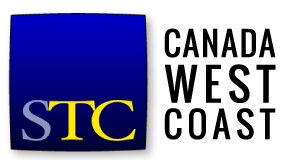People who attended the Tech Comm Café on September 14 were in for a surprise. The restaurant where we’ve met regularly for over two years has closed its doors and been replaced by a construction site, resulting in some confused faces in the parking lot! However, we quickly reconvened on a nearby patio and enjoyed the sunset while we chatted.
One person was attending the Café for the first time. Like many technical communicators, she came to the field from a different direction, in this case chemical engineering and medical research. She’s now studying for a technical communication certificate and is eager to learn more about her new field. We discussed the merits of online help tools, where to look for work, and some of the challenges of working as a technical writer.
One of these challenges is getting people to read documentation. Even technical writers sometimes treat the manual, help, or quick-reference card as a last resort. A writer described an important e-mail from her IT department that contained instructions for changing staff passwords to a new format. In an attempt to make the message stand out from the crowd of other memos, they titled the e-mail “Please read!” Because several previous, unrelated messages had used the same subject line, some employees ignored the e-mail and were caught by surprise on the day the passwords changed. Solution: keep instructions short and clear, and make them distinctive.
A more successful example: a training video, only 1 minute long, communicated an important safety message by using humour and surprise to present a memorable reminder about wearing proper gear in dangerous conditions. The company subsequently reduced a particular type of workplace accident by 98%. Not only did people pay attention, they watched the video more than once. It went on to win a top prize in the STC International Summit Awards, their highest awards for technical communication.
This led to a discussion of videos in documentation: optimal length, ways to use them in online help and tutorials, and tips for producing effective narration.
We also touched on spam e-mail, robocalls, and business cards for students before winding up our wide-ranging alfresco discussion.
Next meetings: The Vancouver Island Tech Comm Café will meet on October 3, 2016, from 6 to 8 p.m. The Lower Mainland TCC will meet on October 12; details below. RSVP to admin (at) stcwestcoast.ca to register or to be added to the mailing list for one or both locations.
Next Vancouver-Area Tech Comm Café: Wednesday, October 12, 2016
The TCC provides networking opportunities, job leads, answers to work-related dilemmas, and a burst of professional energy to keep you motivated. We discuss technical writing tools and techniques, career planning, portfolios, and anything else related to working as a technical communicator.
We welcome anyone who’s interested in technical communication — contractor, in-house, student, long-time tech writer, STC member, non-member, career-changer, or recruiter. We hope to see you at the next meeting!
Date: Wednesday, October 12, 2016
Time: 6:30–8:00 pm Pacific Time
Location: To be announced. If you plan to attend, RSVP to admin (at) stcwestcoast.ca
Agenda
- Introductions. Take 60 seconds to introduce yourself, your background, current activities. A good chance to try out that new elevator speech.
- Announcements and job leads. If you know of an interesting event or a job opening, or you’re looking for work, share it with the group.
- Brainstorming Q&A. Ask about a work-related problem and discuss potential solutions.
- Speed networking. Spend a few minutes with a new contact, exchange business cards, and discuss your professional backgrounds and goals.

